The young capital of the restored Bulgarian state hurries to grow and astound the European continent.
LION’S BRIDGE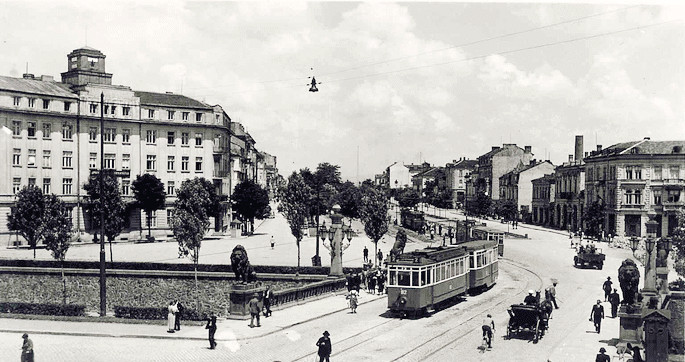
The bridge was built at the place of the so-called Sharen Most ("Motley Bridge") in 1889 – 1890 on the design of the Czech architect Václav Prošek. Located at the end of the then city, from where started the country roads towards Lom.
The name of Lions' Bridge comes from the four bronze sculptures of lions, placed at its four ends. The lions and all metal elements of the bridge were produced by the Austrian company “Waagner”. The railings of the bridge are made of solid granite.
In 2014, a major reconstruction and restoration of the square was completed in order to be fortified and regain its authentic lion's spirit. The bridge is one of the emblematic symbols of Sofia and is an architectural and artistic monument of culture.
BANSKI SQUARE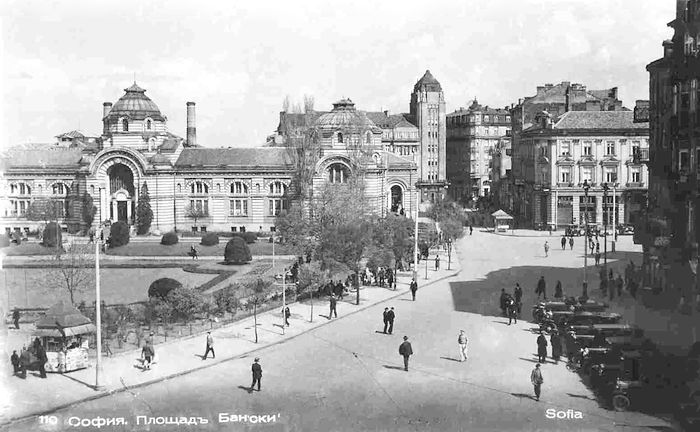
The square was built at the beginning of the XX century in the immediate vicinity of the hot mineral springs in the centre of Sofia, around which in the VI – V century BC, the Thracians established a sanctuary (nympheum) and prehistoric settlement, which later the Romans called Serdica, i.e. the city of the Serdi.
Under the square and the surrounding area there are many archaeological remains from the Roman period of Sofia. Around the I century AD, the spring was capped by the Romans, and thermal baths (Roman baths) and a temple dedicated to the gods of medicine Asclepius, Apollo and Hygeia were built around it.
The Liberation found Sofia with several public bath buildings, built during the Middle Ages, situated in the area that today is occupied by the square and the nearby streets.
During the reconstruction of the square in 2004 the beautiful fountain (work of the sculptor G. Bakardzhiev) and the historical landscaping were restored. One of the attractions of the square is the display of a small medieval Turkish bath in the northwest corner. Banski Square has the status of a historic garden and a monument of culture.
Since its establishment until today, the square has been one of the most emblematic and important centres for Sofia residents and guests of the capital. The thermal spring and the buildings of the Central Mineral Bath – today the Sofia History Museum, the Banya Bashi Mosque and the Sofia Market Hall – are in close proximity and enhance its unique appearance.
CENTRAL MINERAL BATH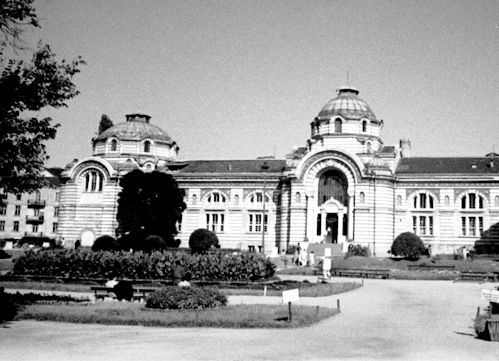
The first public baths using the hot mineral spring in the centre of Sofia date back to the period of Roman presence in these lands. The Liberation found Sofia with several public bath buildings, built during the Middle Ages, situated in the area that today is occupied by the garden of the Mineral Bath.
In 1905, began the construction of the new municipal public bath that had to replace the old bathing buildings from Ottoman times and to meet hygiene needs of the growing metropolitan city. The Central Mineral Bath was built on the design of the architects Petko Momchilov and Fr. Grünanger. It is one of the top achievements of Bulgarian architecture from the early XX century. The majolica decoration of the façade, combining the multicolour plant and geometric motifs, the images of Tyche, the goddess patron of the cities and the god of health Apollo are quite impressive.
The bath opened on May 1, 1913, and at that time was equipped with all modern facilities and water treatment installations. It served as a central public bath until 1988. In 1998, by a decision of Sofia City Council, the building became the home of the Sofia History Museum.
The building of the municipal mineral bath in the city centre is the brightest representative of the national romantic line in Bulgarian architecture from the beginning of the last century and with good reason was declared a cultural monument.
CENTRAL SOFIA MARKET HALL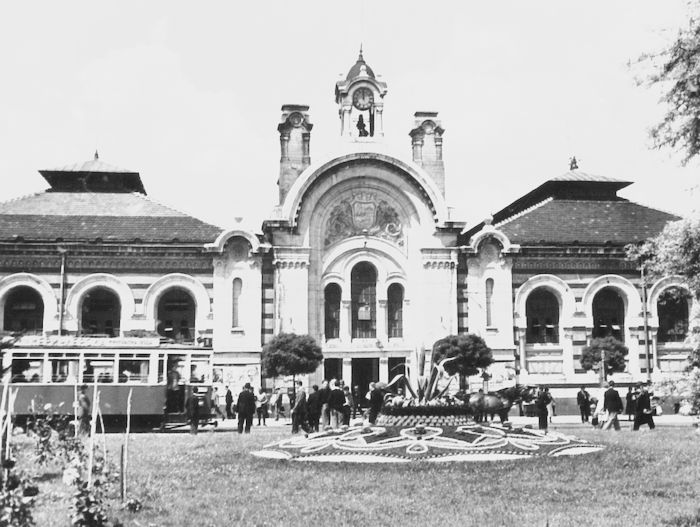
A decision to build a covered market for the sale of meat and dairy products, poultry, fish, vegetables and fruits in the city centre was taken already in the end of the XIX century. Originally, the market was housed in a large wooden building in the city centre. With the expansion and development of the city, in the early years of the XIX century, a decision was made to build a special new building. The design process began in 1907.
The building of the Central Sofia Market Hall, built in the period 1909 – 1911 by architect Naum Torbov, is among the most functional and beautiful Bulgarian architectural models from the beginning of the XX century. The facades are very rich in stone sculptures and other elements of architectural-artistic synthesis. Above the main entrance, in the vault arch is the relief of the coat of arms of Sofia created by the artist Haralampi Tachev. Above it, a triple faced clock is mounted in an arched tower.
At the end of the XX century, the Market Hall was renovated, restored and reconstructed, and in 2001 it again opened its doors for the citizens of Sofia. Within the overhaul, the archaeological remains of the Roman period of Sofia were uncovered and displayed in the basement.
SOFIA UNIVERSITY “St. KLIMENT OHRIDSKI”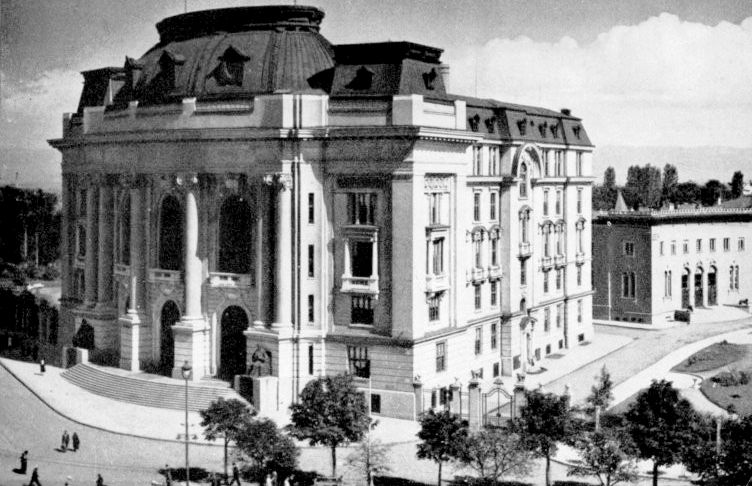
At the end of the XIX century, the famous Bulgarian merchants and donors, the brothers Evlogi and Hristo Georgievi provided the amount of 6 million levs for the construction of a modern university building.
The building of Sofia University "St. Kliment Ohridski" was built in three stages for nearly half a century.
The original building, the so-called "Rectorate", was designed by the architects Bréançon, N. Lazarov and G. Nenov, J. Milanov and covered the period 1907 – 1920.
In 1906, an international competition was held for the design. It had to accommodate the Rectorate and the then existing faculties of the Sofia University. The competition was won by the French architect Henri Bréançon. Unfortunately, the unfavourable social, political and economic situation during the wars of 1912-1918, as well as the subsequent national catastrophes, hampered the implementation of the project.
In 1920, architect Yordan Milanov developed a new design for the University; the construction began in 1924 and ended in 1934. Expansion of the building continued in 1941 – 1952 and 1972 – 1985.
The construction of the South Wing was performed during the period 1940 – 1952 on the design of architect L. Konstantinov. The current look of the university complex was shaped after the completion of its North Wing in the period 1972 – 1985.
In terms of the interior and facade, the building is rich in architectural and artistic synthesis. There coexist renaissance, baroque and classical forms. Prominent Bulgarian artists took part in the exterior and interior architectural design of Sofia University: the sculptor Kiril Shivarov - author of the seated bronze statues of the brothers Evlogi and Hristo Georgievi, the sculptors Mihail Parashchuk, Ivan Funev and Lyuben Dimitrov – authors of the plastic decoration of the façade and the wings, the artists Ivan Penkov and Haralampi Tachev – authors of the stained glass windows in the central building of the Rectorate.
The building of Sofia University is an architectural, historical and artistic monument of culture of national importance.
THE NATIONAL LIBRARY “St.St. CYRIL AND METHODIUS”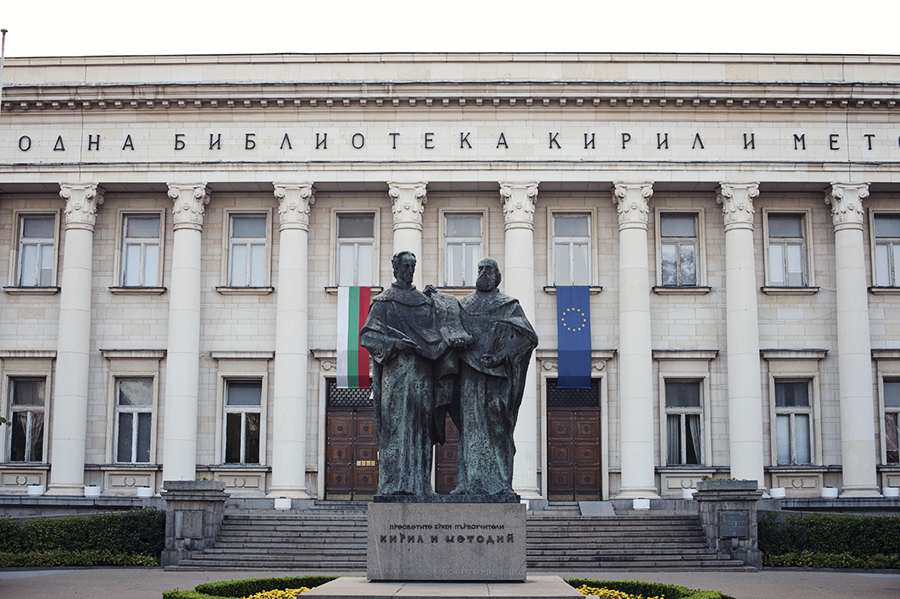
The construction of the library "St.St. Cyril and Methodius "started in 1942 on the design of architects D. Vasilyov and Iv. Tzolov.
The building was completed after the WWII in 1954.
The monumental building is built in the spirit of neoclassical architecture and is the work of some of the most talented Bulgarian architects who have left lasting marks in the history of architecture.
The library is an architectural and artistic monument of culture of national importance.
THE PRINCE'S PALACE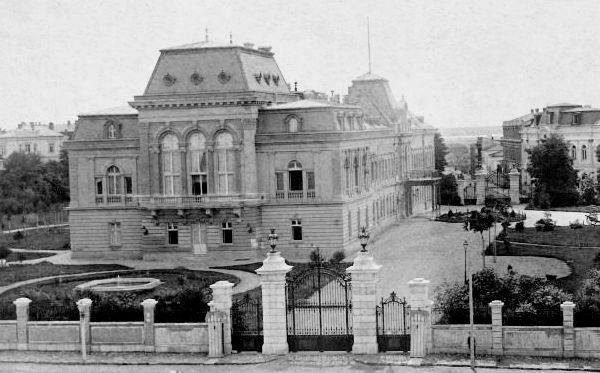
The building was built in 1873 as a Turkish administrative building.
Immediately after the Liberation in 1878, began its reconstruction where the extensions of the building aimed at establishing a representative official palace built by the best examples of European architecture.
In 1879, the building became the residence of Prince Batenberg. In 1880-1882, it was rebuilt on his order by the architects Meyerberg, Rumpelmeyer and Kolář. In 1893-1895, the palace was enlarged with the Eastern Wing according to the design of the Austrian architect Vriedrich Grunanger.
The building contains elements of the Renaissance and Viennese Baroque. The interior is extremely rich in architectural-artistic synthesis. The plaster decorations and ornaments of the palace were made by the Austrian sculptor Andreas Greiss based on specimens from the Palace of Versailles. The handrails and metal decorations were made by the Viennese company “Valerian Gillar”.
In the 1950s, the building of the palace was used jointly by the National Gallery of Art and the BAS National Institute of Ethnography with Museum. In 1978, the building was proclaimed a monument of culture of national importance.
SOFIA CITY ART GALLERY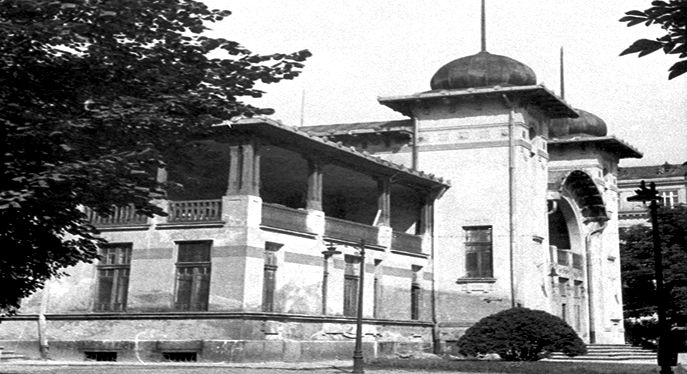
In 1928, on the occasion of the celebrations of the half-century anniversary of the Liberation of Sofia and the 1000th anniversary of the Golden Age of Bulgarian Letters, the then mayor of the city, General Vladimir Vazov, issued an order for the establishment of a special committee to indicate the ways and resources for construction of Sofia Municipal Museum. The new museum had three departments - museum, library and archive, and its main purpose was to "collect, store and study those items of the material culture of Sofia, which are or will be important for the history of Sofia". This initiated the collection of material testimonies of the history, culture and art of Sofia - books, documents, photos, maps, plans, archaeological finds, household items, sculptures, paintings and drawings. The establishment of an ‘art gallery’ was an important part of the museum's activity.
In 1948, part of the gallery's collection was 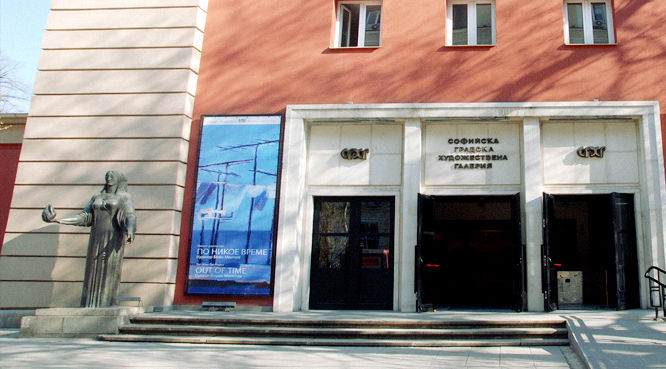
The building of the Sofia Art Gallery is an architectural monument of culture and was built in 1908 on the design of architect N. Torbov for a city casino. It was expanded in 1940 and rebuilt after the wartime bombing in 1948.
The Sofia City Art Gallery is an important cultural centre in the life of the capital.
Today the museum has four departments: fine arts, sculpture, graphics, contemporary art and photography, and the collection contains over 8 000 works of Bulgarian artists from the end of the XIX century to the present day. Part of the sculptures is arranged outdoors in the City Garden.
THE BULGARIAN ACADEMY OF SCIENCES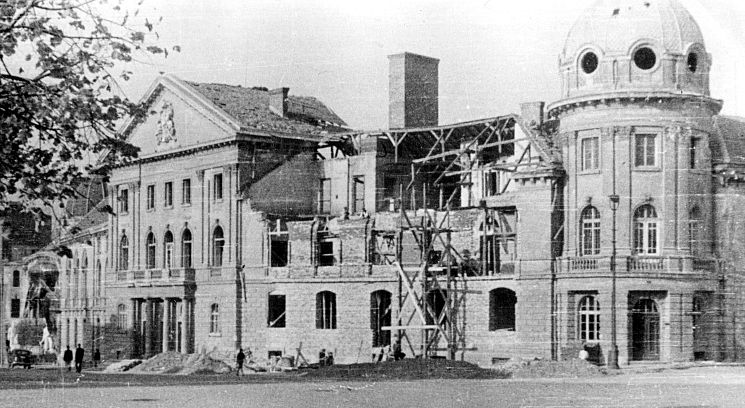
The Bulgarian Academy of Sciences is the oldest institution in modern Bulgaria, established nine years before the restoration of Bulgarian statehood as Bulgarian Literary Society in Brăila
On September 29, 1869, the first Statutes of BLS were adopted and by secret ballot was elected the first BLS management body, consisting of Board of Trustees and Acting Members.
Board of Trustees: Nikolai Tsenov – President, Vasilaki Mihailidi, Petraki Simov, Kostaki Popovich and Stefan Beron.
Acting Members: Marin Drinov (1838 – 1906) – Chairman, Vasil Drumev (1840 – 1901) – Member, Vasil D. Stoyanov (1839 – 1910) – Secretary.
On September 30, Nikolay Tsenov received the full documentation of BLS. All members of the Constituent Assembly took an oath.
After the Liberation, on October 25 – 28, 1878, the General Assembly voted to move the seat of the Society from Brăila to Sofia.
On June 7, 1882, the Bulgarian Literary Society addressed the Sofia Municipality asking for a site for a building of the Society. On October 5, 1890, the foundation stone was laid for the first BLS building.
On March 6, 1911, BLS was transformed into Bulgarian Academy of Sciences. Ivan Geshov was the first chairman of the Bulgarian Academy of Sciences.
On May 25, 1925, on the design of architects Ovcharov and Yordanov began the construction of the new building of the Bulgarian Academy of Sciences, which now-a-days we know as the Headquarters of the Bulgarian Academy of Sciences.
On June 24, 1928, the first General Assembly of the Bulgarian Academy of Sciences was held in the new building at the “Narodno Sabranie” Square. The appearance of the building is preserved in almost its original look.
The building has a prime urban location, forming the northern frame of the square at the National Assembly. The main entrance to the square is emphasised by a sculptural group with the symbols of science and art, created by sculpture Shivarov. The BAS building is an architectural and artistic monument of culture of national importance.
THE BUILDING OF THE NATIONAL ASSEMBLY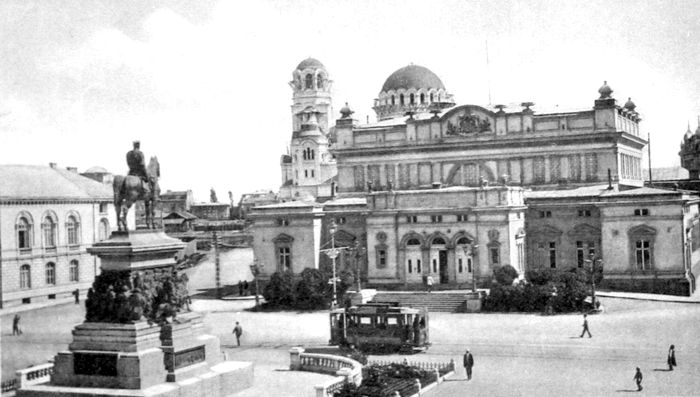
The building of the supreme legislative body of Bulgaria - the National Assembly - was built in the period between 1882 and 1927, in three stages.
The central body with the main entrance from the “Narodno Sabranie” Square was built during the first stage. It was designed by architect Konstantin Jovanović, a Bulgarian who lived and worked in Austria and Serbia before the Liberation.
The building was officially consecrated on November 25, 1884 in the presence of Prince Batemberg, Patriarch Clement and Prime Minister Stambolov.
In the first years after its completion, besides for parliamentary sessions, it was used for celebrations of some important public events, concerts and exhibitions.
Later in 1896 -1899, architect J. Milanov built the two-storey northern wing.
In 1925, architect P. Koichev began the construction of the three-story wing, which houses the lobbies, the MPs’ offices, the archive and the library of the National Assembly. With this the building was finally completed and shaped also from the "St. Alexander Nevski" Square.
The interior of the National Assembly building is very rich in architectural and artistic synthesis. Facing materials and furnishing were imported from Austro-Hungary. The building is essential in the composition of the "Narodno Sabranie" Square. Architectural, construction and conservation-restoration works have been carried out repeatedly both on the facades and on the interior of the building. It is a historical, architectural and artistic monument of culture of national importance.
BULGARIAN NATIONAL BANK
The BNB building was built between 1934 and 1939 on the design of architects Ivan Vasilyov and Dimitar Tsolov. It is considered one of the masterpieces of the Bulgarian architecture of the years before the Second World War in the centre of the capital. With its balanced volume, clean facades, wide parade staircase ending with square columns, it creates a sense of poise and solidity. The combination between a bank building and one of the oldest buildings in Sofia from the XV-XVI century - the Great Mosque, which today houses the Archaeological Museum – is unique. This is one of the significant architectural achievements and a successful solution for a harmonious neighbouring of two historical periods in the urban development of Sofia.
An interesting detail in the building's silhouette is the clock turret crowning the bank. The plastic elements outside are small and carefully selected. Two antique heads are placed at the sides of the main entrance, figured composition with Hermes, the god of commerce, is located above the cornice from “Saborna” street and the angular column with the figure of Saint Nicholas, patron saint of merchants and bankers.
The interior is rich in architectural and artistic synthesis of marble tiling, polished granite, wood carvings, sculptural figures, coloured stained glass, brass decorative grids, etc., which creates the impression of stability, beauty and security. Ivan Penkov and Dechko Uzunov are authors of the murals. The edifice is an architectural and artistic monument of culture of national importance.
“BORISOVA GRADINA” PARK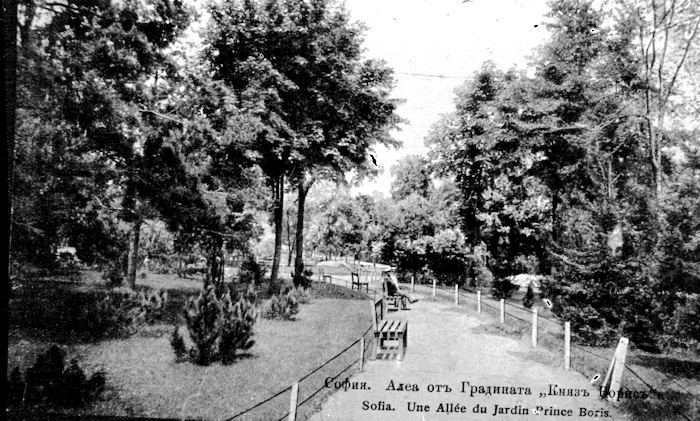
The “Borisova Gradina” park is one of the three large parks on the territory of Sofia.
It is an example of garden and park architecture of national importance and is one of the most significant achievements in this field from the first years after the Liberation of Bulgaria.
In 1882, the mayor of Sofia Ivan Hadzhienov brought the Swiss gardener Daniel Neff from Bucharest. In the spring of 1882, he developed the first plan of the garden and organized a nursery. In 1884, Neff began developing the garden. Initially, acacia trees were planted, flower beds were shaped and a small pond was built, everything was surrounded by oak trees and hawthorn hedges. In 1885, the “Papiniera”, as it was called, was already shaped like a garden, and in 1886 covered an area of 30 hectares with four main alleys.
In 1906, the Alsatian Joseph Frei was appointed Chief Gardener of Sofia. He reorganized Borisova Gradina according to his own plan further developing the one of Neff.
From 1934, the Bulgarian gardener Georgi Duhtev was appointed manager of the Gardens and Parks Service in Sofia, and thanks to him and the then mayor of the city, Eng. Ivan Ivanov there was an upturn in landscape architecture of the capital. The Knyaz Boris Garden was planned and completed to a large extent according to designs drawn on samples of the Austro-German Park Baroque. The clarity of its composition, the perfection of the proportions of the spaces, the carefully selected and composed plant material make it a model and a monument of the Bulgarian garden and park art, as was proclaimed in 1986.
On the territory of the park are placed bust-monuments of prominent Bulgarian historical figures which also have the status of monuments of culture.
DOCTOR’S GARDEN AND MONUMENT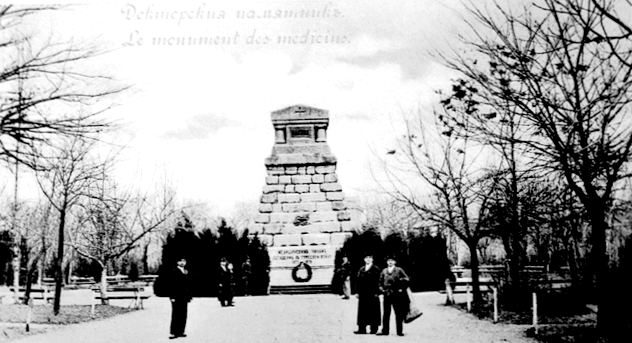
In the Park between the streets Oborishte, San-Stefano, Shipka and Dimitar Polyanov, a memorial was dedicated to the medics who perished in the Russo-Turkish War of Liberation (1877-1878).
The monument was erected between 1883 and 1884 by the Italian craftsman Farabosco on the design of architect A. Tomishko. The monument is a truncated pyramid built of irregular blocks of white sandstone, crowned with a granite sarcophagus.
From the four sides of the monument are cut out the names of 531 medical ranks - doctors and medical orderlies who died in the war. On the sarcophagus are engraved the names of Pleven, Shipka, Mechka and Plovdiv where the most fierce battles took place and many Russian and other casualties were suffered. In the middle of the west side is the ancient symbol of the healer a serpent entwined goblet. Below, at the base of the monument, there is an inscription with large metal letters, commemorating the medics, who died in the war 1877-1878.
The beautiful garden around the Doctor's Monument was shaped later, around 1930, as a dendrarium of a number of tree and shrub species. The alleys of the Doctor's Garden gather near the monument. A lapidarium is organized in the north eastern part exhibiting archaeological fragments from the Roman period of Serdica.
St. ALEXANDER NEVSKI CATHEDRAL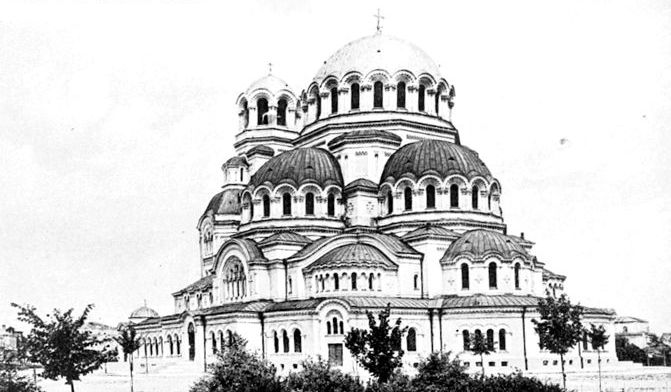
The St. Alexander Nevski Cathedral was designed by the Russian architect Alexander Pomerantsev and was built between 1904 and 1912.
A decision for its construction was taken by the Constituent National Assembly in Veliko Tarnovo in 1879, as an expression of the national gratitude for the liberation, which led to the restoration of the Bulgarian statehood.
The construction of the cathedral began only in 1904, after raising of funds through state subsidies and voluntary donations necessary for implementation of this spectacular for the country endeavour. Despite the scale and complexity of the construction it was completed in a record short period of eight years.
The inner space of the cathedral is impressive with its masterful execution of columns, arches, capitals, friezes, etc. architectural components, and the valuable and rare types of building materials used for their decoration. It is complemented by the high-artistic frescoes, icons and other painting genres made by 20 Russian and 30 Bulgarian artists, some of the best artists in the two countries at that time. The cathedral was consecrated in 1924.
In the construction took part prominent Bulgarian and Russian architects P. Momchilov, Y. Mladenov, Y. Shamardzhiev, and G. Lazarov. Decoration and mural paintings were done by the artists V. Vasnetsov, V. Savinski, A. Mitov, St. Ivanov, A. Belkovski and others.
Today, in the crypt of the cathedral the collection of the most valuable medieval icons of the National Art Gallery is displayed. The cathedral is an architectural, memorial and artistic monument of culture of national importance.
THE SAINT SOPHIA CHURCH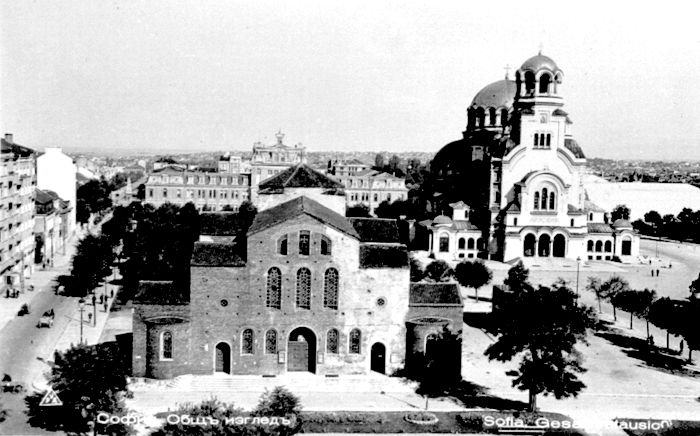
The Saint Sophia Church is one of the few preserved Christian basilicas in Bulgarian lands.
It was built in the VI century on the site of several earlier churches from IV and V century. At the end of the XIV century it was rebuilt in a mosque with a minaret. It suffered the earthquakes in 1818 and 1858.
Along with the church "St. George", it is one of the oldest and most valuable historical sites of Sofia from its Roman period.
It is located in the centre of the holiest place of the centuries-old city, the so-called "Serdica Necropolis".
Beneath the entire church lies its rich archaeological level, consisting of ancient tombs whose display is forthcoming. The Saint Sophia Church is an archaeological and architectural monument of national importance.
BOYANA CHURCH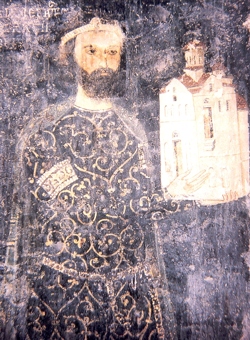
Boyana Church is the only monument of culture of Sofia Municipality, which in 1979 was added to the UNESCO World Heritage List.
The church has an extremely high cultural and historical value in terms of its mural decoration in the interior. The church dates back to the XI –XII century and throughout the centuries was built in three stages, being extended and expanded in XIV, XVI, and XIX century.
Its high significance is due to the preserved and restored unique frescoes of XI, XII, XIII, XV, XIX c. It is believed that the earliest frescoes in the church precede the dating and artistic qualities of the early Italian Renaissance.
Currently, the Boyana Church is a subsidiary of the National History Museum, and after the restoration of 2007, opened its doors to Sofia residents and guests of the capital. It is an architectural and artistic monument of world significance.
ST. NEDELYA CHURCH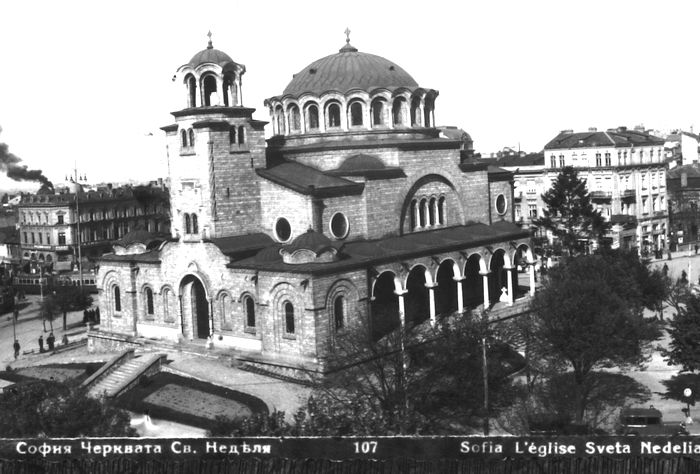
The current Saint Nedelya Church was built in 1930 on a design of architects I. Vasilyov and D. Tsolov on the site of two older churches from the XVIII and XIX century. In 1856, a new larger church with a school and two towers was built, which existed until the historic assault in 1925. The new design preserved the size of Renaissance church, with some extension to the east.
In the north narthex of the present church is the grave of Sofia Bishop Parthennius, and in the south – the grave of Exarch Joseph I.
The mural decoration was done between 1971 and 1973 by the artists K. Yordanov, G. Georgiev, D. Balkanski, N. Rostovtsev and others. After 1925, the iconostasis was made by I. Travnitski. The interior of the church is very rich in architectural and artistic synthesis.
Beneath the church lie the archaeological remains of a large public building (praetorium) from the Roman period of Sofia. The church is an architectural, historical and artistic monument of local importance.
THE CHURCH OF ST. GEORGE (ROTUNDA)
The church is the oldest preserved and exhibited monument of culture in Sofia.
The building has repeatedly changed its function. Originally, it was built for a mausoleum (martyrium) in the III-IV century. During the Renaissance, it served as an Orthodox temple with much-changed appearance.
The interior is extremely rich in architectural and artistic synthesis. The building is famous for the restored frescoes from XVI, XVII and XIX century.
The church is an architectural, archaeological and artistic monument of culture of national importance.
THE BUILDING OF THE MILITARY CLUB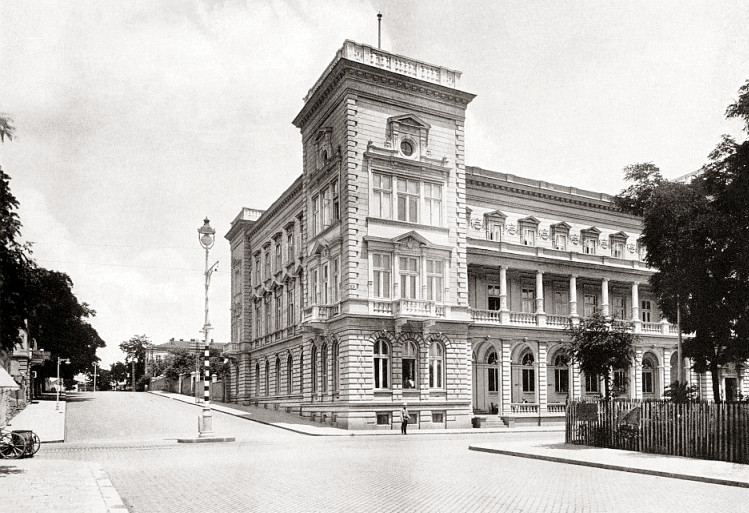
The Military Club in Sofia was built between 1895 and 1900. Designer of the building was the Czech architect Adolf Kolář but was finished with the active involvement of the famous Bulgarian architect Nikola Lazarov.
The building is designed in Renaissance style with rich interior decoration including plastic ornaments, silk wallpaper, crystal chandeliers and mirrors, etc.
The building of the Military Club is one of the first representative public buildings in the late XIX and the early XX century. At that time and later it had a significant place in the cultural life of the capital. During these years, it was the most prestigious Sofia salon, which hosted official gatherings of various nature, literary readings, musical events, New Year and spring balls, etc.
IVAN VAZOV NATIONAL THEATRE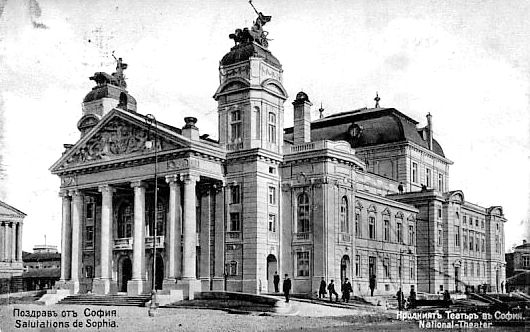
The building of the National Theatre in Sofia was completed in 1907. It was designed by the Viennese architects F. Filner and H. Helmer and was built on the site occupied in the 80s of the XIX century by the wooden structure of “Osnova” Theatre. The theatre is named after the classic - poet and writer Ivan Vazov.
For the construction of the new theatre, the National Assembly passed a law on raising of funds and Sofia Municipality provided the terrain.
The building was designed by the Viennese architects Fellner and Helmer, who are authors of several dozen theatre buildings in many European capitals and other cities.
The facade in neoclassical style is impressive, with six columns supporting a triangular pediment, on which god Apollo is surrounded by muses of the arts.
In 1923, the building was damaged by a fire, from which only the central façade survived, but the building was restored in 1929 by the German architect Martin Dülfer. Later in 1974-1976, a major reconstruction of the original appearance of the National Theatre was carried out as well as substantial changes in its interior. The building was restored in its original look in 1976.
Ivan Vazov National Theatre is the largest theatre in Bulgaria and one of the architectural landmarks of Sofia.
THE FIRST TRAMS IN SOFIA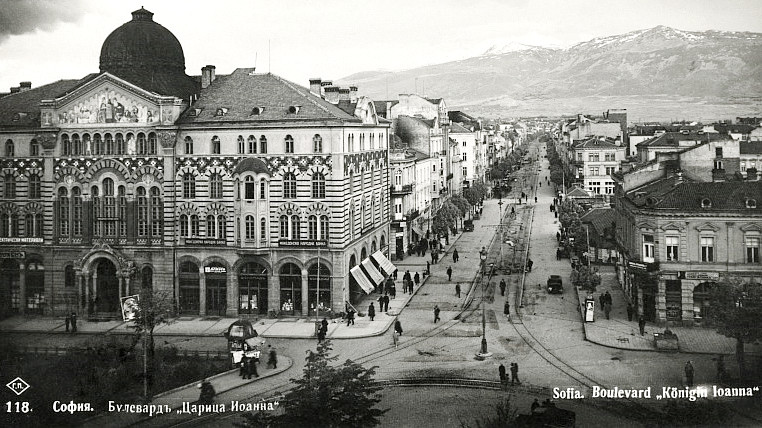
Electrical tram transport was launched on January 1, 1901. The first carriage ran on the line between the railway station and “Graf Ignatiev” street.
The population of Sofia needed some time to get used to the new way of transportation despite the great interest in the unknown vehicle. Therefore, at first, the embarkation and disembarkation stops were not fixed but optional for the passengers.
In a short time 23 km single tram lines were built and twenty-five Belgian carriages were purchased to serve the established six routes.
The carriages were driven in forward and reverse direction from open platforms located at both ends.
After the First World War, the tram transport in Sofia was modernized, new routes were opened, the railway track was doubled and new railway cars were procured.
EAGLES’ BRIDGE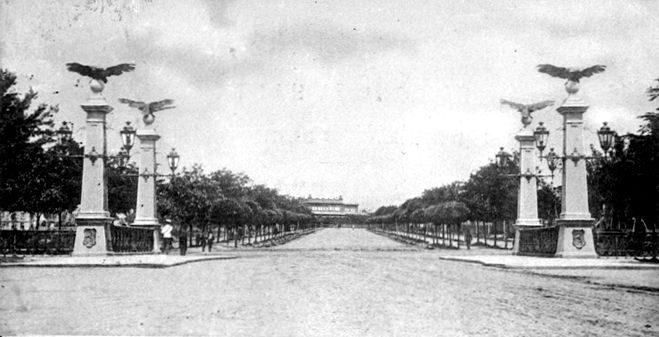
The bridge was constructed in 1891 on the design of the Czech architect Václav Prošek.
It completes the central historical direction from/to “Tsar Osvoboditel” Boulevard and flanks the entrance to the “Borisova Gradina” park. Eagles’ Bridge is one of the first monolithic bridges built in Sofia after the Liberation.
At its four sides, on massive stone pillars are placed four eagles with outspread wings. The railings of the bridge have richly ornamented cast iron grids.
In 1970, in connection with the expansion of “Tsarigradsko Shosse” Blvd., the bridge was widened.






